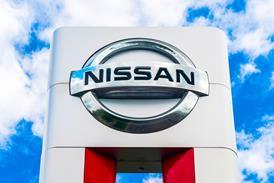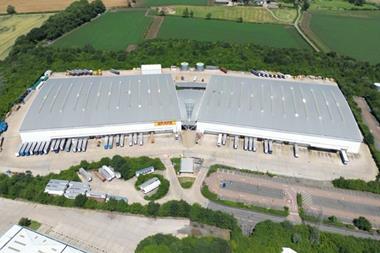
Driving electronically linked trucks on German motorways is safe, technically reliable and easily applicable to a logistic company’s day-to-day operations, researchers claim after completion of a pilot project.
Deployment of truck platoons could ensure more efficient use of space on motorways, less congestion and increased road safety, they say.
Last June, logistics provider DB Schenker provided two lorries manufactured by MAN Truck and Bus. Fresenius University of Applied Sciences led the research. The results have now been presented to Germany’s transport and digital infrastructure ministry, which sponsored the project by contributing around €1.86m ($2.1m).
The trial was based on two digitally networked vehicles travelling on the motorway between Schenker’s Nuremberg and Munich centres.
Having covered some 35,000 test kilometres, the drivers praised the comfort and general sense of safety, even when only 15 metres to 21 metres apart, said the project team.
The platooning system installed in the MAN-built trucks operated smoothly 98% of the time. Active interventions by the drivers were necessary only once every 2,000 kilometres, less than expected by the team.
The field test demonstrated savings of 3% to 4% in fuel consumption, giving potential to contribute to CO2 emission reductions, said Joachim Drees, chairman of MAN Truck and Bus’ management board.
“First and foremost, we are pleased that the system works reliably and can increase safety on the motorway. Accordingly, platooning is an important step for us on the way to automation,” he added.
Germany’s transport and digital infrastructure minister Andreas Scheuer said: “The mobility of the future will be automated and networked. This is also true for logistics … We want to make the processes even safer, more efficient and more environmentally friendly, all along the value chain.”
He added drivers have a key role to play. “In a digital truck they will be modern logistics specialists. This will open up new prospects for the profession.”
Participating in the tests brought about a significant change in the drivers’ previously sceptical attitude to the technology, according to scientists from Fresenius University who investigated the psychosocial and neurophysiological effects on the drivers.
“A general sense of safety and trust in the technology is echoed in the drivers’ assessment of specific driving situations. None of these were described as uncontrollable,” said professor Sabine Hammer from the university’s Institute for the Science of Complex Systems.
The lorries’ drivers described other vehicles cutting in from adjacent lanes or across multiple lanes as disagreeable, but not critical. “Due to the fast response times of the system, drivers would now prefer a distance of 10 metres to 15 metres,” she said.
The institute’s director, professor Christian Haas, said: “The EEG [electroencephalogram] measurements show no systematic differences between platoon runs and normal runs when it comes to the neurophysiological stress placed on drivers, in terms of concentration or fatigue.”
For international use, the university’s scientists recommend further research with longer periods in platooning mode.
According to DB Schenker’s own findings, platooning could be used extensively in logistics. Alexander Doll, member of the management board for finance, freight transport and logistics at parent company Deutsche Bahn, said: “We have analysed our European transport network and it is safe to say that around 40% of the kilometres travelled could be carried out in platoons.”
But he cautioned that for the technology to become reality, further tests and establishing a regulatory framework would be necessary.
The project’s partners say they are convinced truck platooning’s potential can be further increased by future developments, such as new digital business models in the logistics segment.








































No comments yet